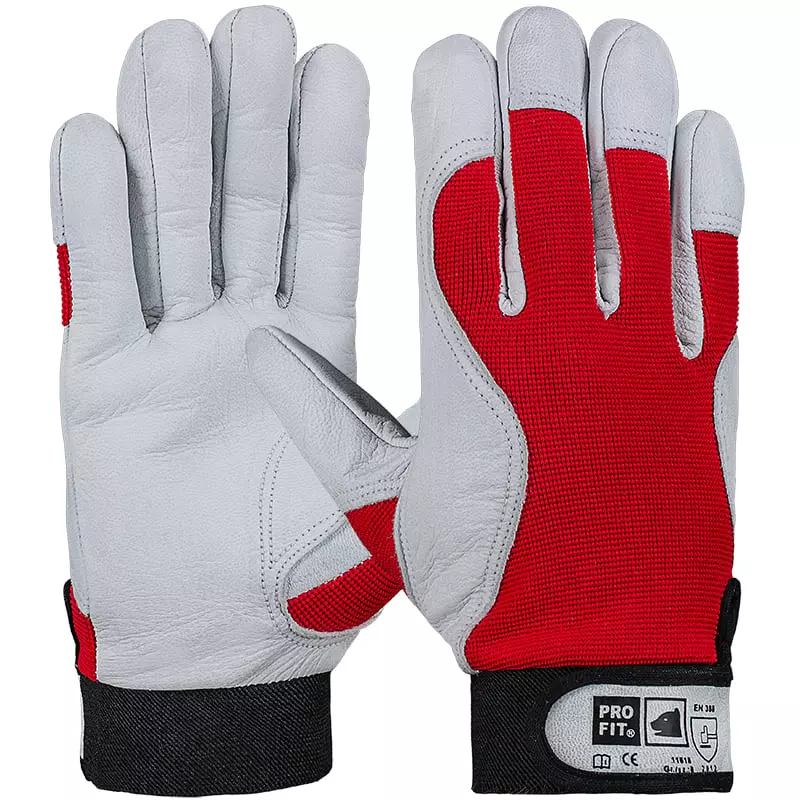
Features You'll Love

Cuff Style · Hook And Loop
EN 388 · Tear Resistance Level 2
Determines how the glove secures around the wrist, affecting fit, protection from debris, and ease of putting gloves on and taking them off.
Offers moderate resistance against snagging or catching on rough objects, preventing small rips from growing.

EN 388 · Abrasion Resistance Level 3
Provides good resistance against scraping, scratching, and rubbing on rough or abrasive surfaces.
PRO FIT
Nappa Leather Mechanic Gloves, 12 pairs
PRO FIT
Nappa Leather Mechanic Gloves, 12 pairs
(24)
45,54 €
Price per 12 pairs
3,79 € / pair
Choose size
Shipping fee is 4,74 € for orders under 150,00 €
Features You'll Love

Cuff Style · Hook And Loop
EN 388 · Tear Resistance Level 2
Determines how the glove secures around the wrist, affecting fit, protection from debris, and ease of putting gloves on and taking them off.
Offers moderate resistance against snagging or catching on rough objects, preventing small rips from growing.

EN 388 · Abrasion Resistance Level 3
Provides good resistance against scraping, scratching, and rubbing on rough or abrasive surfaces.
Product description
High-quality work glove made of nappa leather that combines optimal comfort and functionality. The combination of soft leather and textured jersey back provides excellent freedom of movement. The hook and loop fastener allows individual adjustment for secure fit, while the reinforced thumb flexor and wing thumb increase durability.
Product Features:
- Nappa leather construction with jersey back
- Practical hook and loop fastener for optimal fit
- Reinforced thumb flexor with wing thumb
- Textured fabric back for improved breathability
- Leather reinforcement for additional protection
Technical Details:
- Soft, supple nappa leather
- Excellent tactile sensitivity
- EN 420:1994 EN 388:1994 certified
- PPE Category II for medium risks